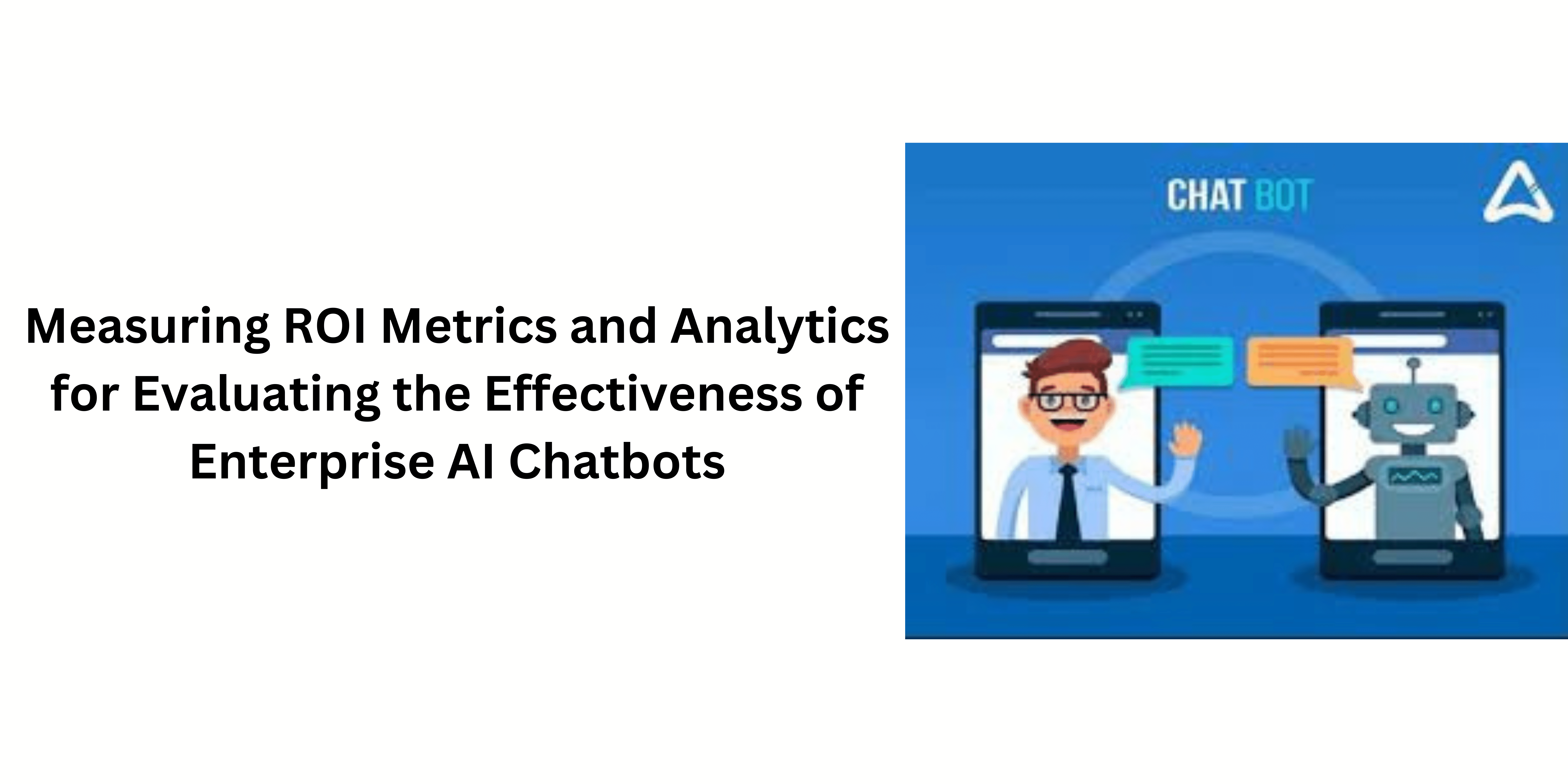Retention analysis is key in measuring chatbots’ long-term efficacy and success since chatbots can build long-lasting customer relationships that fuel business expansion.
Frequency of Interactions with Chatbots When it comes to customer retention for chatbots, interactions are a critical indicator. Regular interactions demonstrate customer interest in using the bot for information or assistance—something companies must monitor closely to identify customers who frequently rely on chatbots for assistance.
Monitoring metrics like Net Promoter Score (NPS) and Customer Satisfaction Score (CSAT) is also vital in measuring customer retention with chatbots, such as loyalty. Positive customer experiences demonstrate how effective chatbots have enhanced customers’ overall experiences.
Chatbots have proven highly successful at offering tailored recommendations that keep customers returning. These automated systems track conversion rates of personalized suggestions and measure customer satisfaction with customized offerings.
As previously discussed, user feedback and sentiment analysis provide invaluable information regarding customer expectations and satisfaction levels; positive reactions indicate increased customer retention rates overall.
Evaluating chatbots’ effects on customer retention requires measuring interaction frequency, satisfaction metrics, and any user input from chatbot development companies. By tracking interaction frequency measurement metrics, chatbots can enhance customer experiences while building long-term client relationships.
Examining the Accuracy and Effectiveness of AI Chatbot Responses
Analyzing the effectiveness and accuracy of AI chatbots is an essential aspect of testing the reliability and performance of these virtual assistants. The effectiveness in the operation of an AI chatbot depends on its capability to provide accurate and pertinent information while efficiently responding to user questions.
Accuracy of AI chatbot responses is based on the capability of the system to interpret the inputs of users correctly and provide correct responses. The organizations can evaluate the accuracy of their chatbot by comparing the responses of the chatbot to a predetermined set of appropriate answers, or by using feedback from users to pinpoint situations where the chatbot might have misinterpreted or given incorrect data.
Effectiveness is more than just accuracy. It is the ability of a chatbot to serve its purpose. Examining the rate of completion of user requests as well as the general success in meeting users’ expectations provides insights into the chatbot’s efficiency. A high percentage of completions indicate it is fulfilling the user’s expectations and positively impacting users’ experience.
The monitoring of metrics that measure user satisfaction like the Customer Satisfaction Score (CSAT) and feedback, are essential to being able to gauge the effectiveness and accuracy of the chatbot’s responses. Positive feedback and scores of high satisfaction usually correlate with accurate and useful responses, indicating the chatbot’s effect on interactions with users.
Furthermore, businesses can conduct usability tests and study user interactions to pinpoint areas that need improvements in efficiency and accuracy. The process of iterative improvement of chatbots based on feedback from users and real-world use scenarios can help improve the overall performance of the chatbot over time.
In the end, evaluating the efficacy and accuracy of AI chatbot responses requires testing the accuracy of understanding inputs from users, the responses to user requests that are completed and satisfaction levels of users. Through constant refinement and improvement of the capabilities of chatbots, businesses can ensure that their users receive precise and reliable answers, which in turn contributes to the achievement of the implementation of the chatbot.
Calculating the Return on Investment (ROI) for Chatbot Implementation
Calculating the return on investment (ROI) for the implementation of chatbots is essential for companies looking to determine the financial benefits and overall efficiency of incorporating AI-driven chatbots in their daily operations. ROI gives a quantifiable measurement of the value that is derived from the chatbot’s investment as in comparison to the expenses incurred.
In order to calculate ROI, companies should consider both the benefits and the costs involved with implementing chatbots, especially when incorporating AI chatbot development services. In terms of benefits, aspects like improved efficiency of operations, savings in costs, as well as revenue generation and increased customer satisfaction play a major part. For example, reduced support costs for customers as a result of chatbot automation, as well as increased revenue from chatbot-powered interactions, are positive for the overall return on investment.
On the other hand, on the expense side, businesses must consider the initial investment into chatbot development and ongoing maintenance costs as well as any related operational expenses. It is important to consider not just the direct costs but as well the indirect costs associated with monitoring, training and refining the chatbot as time passes.
Net profit from investments include the gains realized minus total cost to be incurred. This is calculated in percentage.
Monitoring and regularly revising the ROI calculation enables companies to monitor the impact of their chatbots’ implementation. Positive ROI means that the benefits are greater than the expenses, thereby establishing a convincing argument for continuing to invest in and improve AI chatbots.
In conclusion, calculating the ROI for chatbots is a thorough analysis of the advantages and costs. It also provides companies with an understanding of the value that can be realized by the integration of chatbots into their business procedures.
Understanding the Relationship Between Chatbot Metrics and Business Goals
Understanding the connection between the metrics of chatbots and business goals is essential for businesses looking to ensure that they align with their AI initiatives with their strategic goals. Every metric analyzed in the context of the performance of chatbots should directly contribute to the overall goals of the business, so that the use of chatbots has tangible benefits.
In the first place, aligning the metrics of customer satisfaction such as the Net Promoter Score (NPS) as well as customer Satisfaction Score (CSAT) in line with the company’s goals is vital. Positive customer experiences, as measured by these metrics, help to increase customer retention and loyalty and directly affect the overall goal of creating an unwavering base of customers.
Efficiency metrics, including resolution and response times are directly linked to the operational goals. Response times that are faster result in enhanced customer service. Likewise, resolution rates that are higher reduce the requirement for support for customers, which is in line with the goals of operational efficiency and cost-effectiveness.
Sales and conversion rate factors directly affect revenue-generating goals. In influencing the user’s interactions positively and helping them navigate through their sales process, chatbots can contribute to improved conversion rates and, in turn the growth of businesses through increased sales.
The connection between the metrics of chatbots and business goals is ever-changing and dynamic, especially with the involvement of AI chatbot development. Businesses should be constantly reassessing and modifying their metrics to reflect changing markets and priorities. For example, if the company’s goal is to expand market penetration, metrics that relate to engagement and acquisition could be more important.
In the end knowing the connection between chatbot metrics and business objectives requires a thoughtful strategy. By aligning metrics with specific business objectives–whether they be related to customer satisfaction, operational efficiency, revenue generation, or market expansion–organizations can maximize the impact of chatbot implementations on their overall success. Regularly evaluating and adjusting metrics will ensure that they are in constant aligning with the changing business objectives.
Benchmarking Chatbot Performance Against Industry Standards
The process of comparing chatbot performance to industry standards is an essential procedure that allows companies to assess their AI initiatives in relation to accepted standards and best practices in their field. This helps businesses find areas of optimization, and optimize their strategies and make sure that their chatbots are in line with or exceed the expectations of industry.
A key element of benchmarking is comparing measures of user engagement including interactions frequency, duration of sessions and satisfaction of users, against industry standards. Analyzing how the chatbot’s performance is correlated with the standard benchmarks can help organizations assess how effective their chatbot agents in keeping and capturing the interest of their users.
Efficiency metrics, such as the rate of resolution and response time must be evaluated within the in the context the industry standard. Businesses can evaluate whether their chatbots are able to meet or exceed the expectations of speed and efficiency when responding to user inquiries, and ensure that their performance matches industry standards for the best user experience.
The ability to compare conversion rate and impact measures with industry norms is essential for businesses that want to utilize chatbots to generate revenue. By benchmarking these metrics, businesses are able to pinpoint areas where their chatbots’ strategies perform well or require adjustments to exceed or meet the standards of performance for their industry.
In addition, businesses should think about using accuracy benchmarks to measure the degree to which their chatbots comprehend and respond to inputs from users in comparison to industry standards. This helps ensure that the chatbot’s capabilities are aligned with industry standards for accuracy and relevancy within the industry in which it operates.
In the end, comparing chatbots’ performances against the standards set by industry requires thorough assessment of efficiency, engagement as well as conversion and accuracy measures. By ensuring that they are in line with or exceed established benchmarks, businesses can improve their chatbot strategy, enhance user experience and remain ahead of the competition in their industry. Continuous monitoring and adjustments to keep up with evolving standards of the industry help ensure the ongoing achievement of AI chatbots.
Monitoring User Feedback and Sentiment Analysis for Continuous Improvement
The monitoring of user feedback and the conducting of the analysis of sentiment are vital techniques for businesses looking for constant improvement of their AI chatbots. Feedback from users can provide valuable insights on user experience, while sentiment analysis is a way to gauge the level of emotional tone and levels of satisfaction that users express during their chatbot interaction.
Feedback from users can be collected via a variety of channels, such as reviews, surveys, and direct interactions. By analyzing this feedback, organizations are able to better understand the perceptions of users and identify areas of pain and identify areas where the chatbot might require enhancement. Positive feedback can help reinforce the effectiveness of strategies and negative feedback can reveal areas for improvement.
Sentiment analysis focuses on analyzing the emotion expressed in the user’s inputs, with valuable insights particularly when involving an AI chatbot development company. It helps companies determine whether users express anger, satisfaction, or even neutrality. Monitoring the changes in sentiment over time enables businesses, with the expertise of an AI chatbot development company, to recognize patterns and make appropriate changes to the chatbot’s behavior.
Continuous enhancement based on feedback from users and analysis of sentiment is an incremental process. The company can decide which enhancements correspond with user preferences and address issues that are common and improve customer experience overall. This method of iteration assures that the chatbot is constantly evolving to keep up with changing user expectations and goals for business.
Additionally, companies can utilize sentiment analysis to assess the effect of certain interventions or modifications for the chatbot. For example, when implementing modifications, the use of sentiment analysis will determine whether users react more positively to updated chatbot’s responses or features.
In the end, analyzing feedback from users and conducting sentiment analysis are crucial elements of a proactive plan to ensure constant improvement in AI chatbots. Utilizing user insights companies can improve their chatbot’s capabilities, increase user satisfaction, and remain flexible to changing user requirements in the end, ensuring longevity of success for their AI initiatives.
Addressing Challenges in ROI Measurement for AI Chatbots
The challenge of measuring ROI to measure ROI for AI chatbots is essential for businesses that wish to demonstrate the worth of their investment. Many factors can hinder an accurate method of calculating ROI within the context of chatbot deployments and addressing these obstacles is vital for making well-informed decisions and enhancing strategies.
The biggest challenge is the notion of attribution of specific outcomes to the influence of a chatbot. External factors, like the marketing campaign, changes to market conditions, and other business initiatives, could affect the calculated ROI. Utilizing strategies to identify and assess the distinctive value of the chatbot’s contribution to external factors is crucial for ensuring a reliable evaluation.
The measurement of certain benefits, like enhanced customer experience or brand loyalty, is difficult as they might not have monetary value. Businesses must create reliable proxies or indirect indicators that capture the benefits of qualitative analysis and integrate these to an ROI calculation.
Furthermore, the ever-changing nature of chatbot technology poses problems in establishing constant measurement benchmarks over time. As chatbots grow and develop and become more efficient, the metrics used to measure ROI measurement might need to be adjusted to reflect the changing abilities and requirements.
Assuring accuracy and reliability of data is a further challenge, especially when dealing with multiple sources of data as well as integration point. Unreliable data could lead to incorrect ROI calculations, which is why it essential to establish solid data validation and cleansing procedures.
The solution to these challenges requires a deliberate and strategic approach, especially when considering AI chatbot design. Businesses should devise clear strategies and utilize advanced analytics and constantly improve measurement frameworks to adjust to the ever-changing landscape of AI chatbot technology. If they tackle these issues head-on, companies can improve the accuracy of ROI metrics and convey the worth of their AI chatbots efficiently.
Implementing Data-driven Strategies for Enhancing Chatbot ROI
Implementing strategies that are based on data is essential to increasing the ROI (ROI) of AI chatbots. Utilizing data-driven insights, companies are able to enhance chatbot performance, develop strategies, and increase the return on their investment. Here are the most important considerations to consider when adopting data-driven strategies:
Users Analytics
Make use of user analysis to determine user behaviour, preferences, and patterns of interaction. Utilizing data on engagement, duration of sessions and frequently asked queries can help organizations tailor the chatbot’s experience to users’ preferences, which ultimately improves satisfaction and return on investment.
Analyzing Conversions
Track and analyze the conversion rates that are associated with chatbot interactions. Understanding how chatbots can contribute to sales, lead generation or other goals that convert can help companies refine their chatbot strategies in order to increase their impact on business goals.
Sentiment Analysis
Use sentiment analysis for measure the user’s emotions throughout interactions. Monitoring the sentiment can help determine areas for improvement and helps ensure that chatbot’s actions are consistent with the positive experiences of users and increase levels of satisfaction and retention.
Operational Efficiency Metrics
Examine efficiency metrics, such as resolution rates, response time and handling time. Analytics based on data can provide insights into operational efficiency can help organizations improve their processes, decrease costs, and improve overall efficiency, which can positively impact ROI.
A/B testing
Conduct A/B testing to play around with different chatbot responses to users, interfaces, and engagement methods, especially when considering chatbot design and development. Data from A/B tests allow companies to pinpoint elements that are performing well and improve the chatbot to achieve more effective outcomes.
Continuous Iteration
Create a continual improvement cycle based upon insights from data. Analyze regularly the performance metrics, feedback from users as well as other pertinent data to continuously improve chatbot’s capabilities as time passes.
With the help of comprehensive analysis of data, companies can make sure that chatbots are positioned strategically to meet the business objectives and provide real-time returns. This method of iterative data-driven development helps to maximize the efficiency and effectiveness of AI chatbots.
The Key Takeaway
In the end, success of the implementation of AI chatbots requires a complete and strategic plan that goes beyond the initial launch. Through careful measurement and analysis of performance indicators like engagement of user’s efficiency metrics, user engagement, as well as conversion rate, businesses can evaluate the impact of chatbots in various aspects of their business.
Continuously monitoring feedback from users, as well as sentiment analysis and alignment with industry benchmarks, leads to continuous improvements, especially when incorporating AI chatbot development services. Furthermore, calculating the return on investment (ROI) as well as tackling issues in measuring further enhances the comprehension of chatbots’ worth. Through implementing strategies based on data and incorporating the insights into iterative improvements, companies can not only improve the quality and efficiency of chatbot responses but also increase the overall value.
The rapid character of AI chatbots demands flexibility to ensure that the digital assistants are in line with the changing business objectives as well as user expectations and established standards of excellence for long-term success.











